Kyoto isn’t just a stop on a map; it’s a journey inward. A place where temple bells echo through misty hills, geishas glide silently down lantern-lit alleys, and centuries-old traditions blend seamlessly with modern life. On my first visit, I expected beauty; what I found was a sense of belonging. Every street, shrine, and bowl of ramen felt like a quiet invitation to slow down and truly experience the moment.
If you’re wondering how to structure your time in Kyoto, you’re in good hands. Below is a carefully curated list of the best things to do in Kyoto, written not just with a traveler’s eye but with a storyteller’s heart.
1. Visit Fushimi Inari Taisha at Sunrise
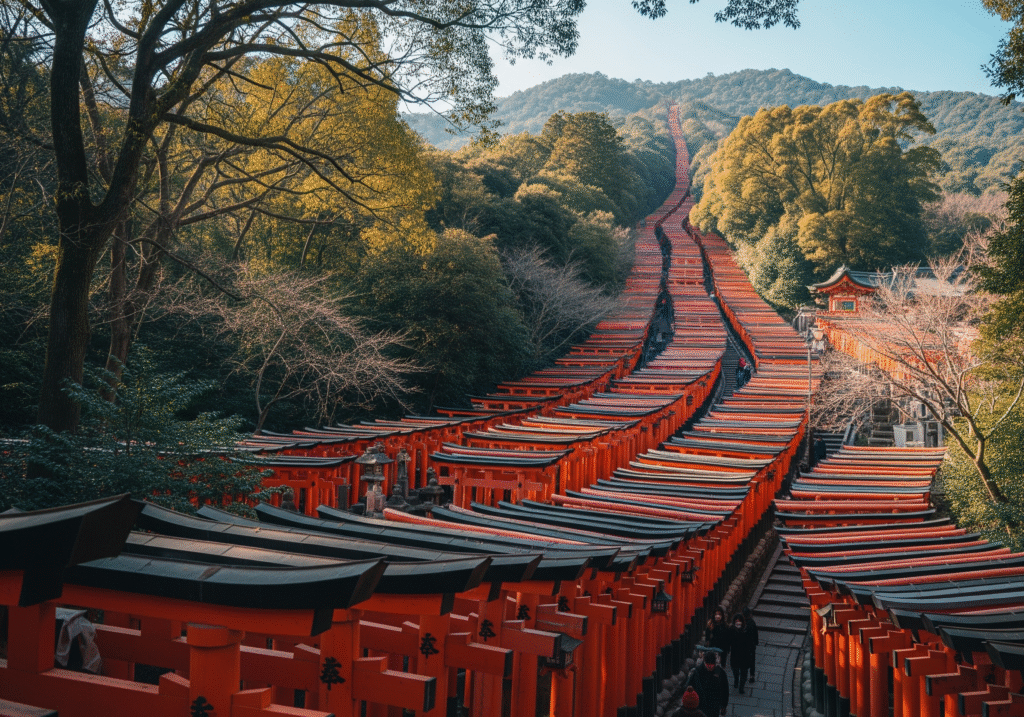
No visit to Kyoto is complete without walking through the iconic red torii gates of Fushimi Inari Taisha. This Shinto shrine, dedicated to the god of rice and prosperity, sits at the base of Mount Inari and stretches upward via a trail lined with more than 10,000 gates. Each gate has been donated by individuals or companies seeking blessings.
While many tourists visit during midday, I made it a point to arrive just before sunrise. Climbing the quiet trail in the early dawn was like walking through a dream. The forest mist swirling between the gates, birds beginning to stir, and not another soul in sight. As the sun peeked over the horizon, the gates began to glow in warm hues of orange and gold. It was one of the most powerful moments of solitude I’ve ever experienced.
Most visitors stop at the Yotsutsuji Intersection, which offers great views over Kyoto, but I recommend continuing to the summit. The higher you go, the quieter it gets. Along the way, you’ll find miniature shrines, fox statues, and moss-covered offerings. Bring water, good walking shoes, and your camera, but more than anything, bring presence.
2. Explore Arashiyama Bamboo Grove

Arashiyama Bamboo Grove is one of those places that every Kyoto guidebook mentions, but no photo can truly do justice. Towering stalks of bamboo sway above a narrow path, creating a whispering tunnel of green. It’s not just beautiful; it’s immersive. You don’t just see it, you hear it, feel it, and breathe it in.
To avoid the crowds, I arrived just after sunrise. For about 30 magical minutes, I was alone, surrounded by creaking bamboo and the soft rustle of leaves overhead. I took my time walking the winding path, stopping often just to listen. There’s something spiritual about this place. Even if you’re not usually one for nature walks, this grove will move you.
Don’t miss Tenryu-ji Temple nearby, which dates back to the 14th century. Its Zen garden is an ideal follow-up to the bamboo grove’s natural elegance. Afterwards, head down to the Katsura River, rent a rowboat, or stroll across the Togetsukyo Bridge for views of the surrounding mountains, especially gorgeous in autumn and spring.
3. Wander Gion at Dusk

Gion is Kyoto’s geisha district and perhaps the most evocative neighborhood in the city. As the sun dips behind the hills, the alleys of Gion take on a soft, golden hue. Paper lanterns glow, the sound of geta sandals echoes on stone, and the atmosphere becomes both nostalgic and alive.
I recommend beginning your evening around Hanamikoji Street, where traditional teahouses and ochaya line the road. While it’s rare to see a geiko (Kyoto’s term for geisha) or maiko (apprentice) on the main street, you might catch a glimpse on the quieter back alleys like Shirakawa Lane. There, alongside a willow-lined canal, time seems to stop.
If you’re lucky enough to join a cultural experience, such as a geisha performance, a calligraphy workshop, or a private tea ceremony. You’ll gain insight into a world few outsiders ever get to see. But even just wandering through Gion is an experience in itself: one that reveals the heartbeat of old Kyoto.
4. Take Part in a Traditional Tea Ceremony
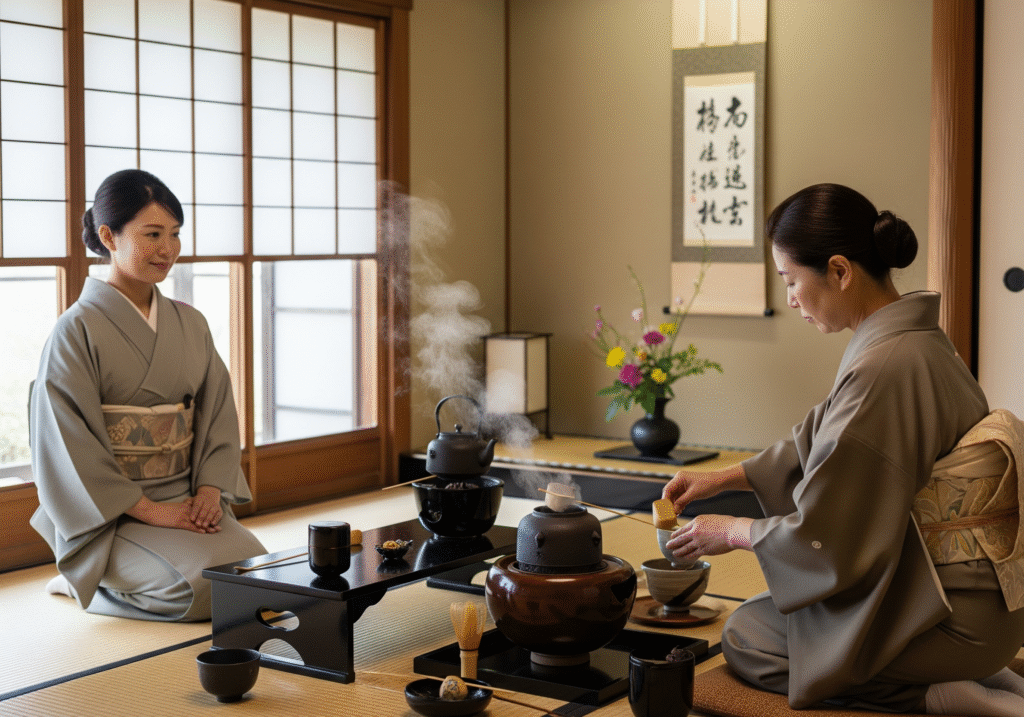
In a world obsessed with speed, the Japanese tea ceremony offers something rare: stillness. Rooted in Zen philosophy, every gesture in a tea ceremony is deliberate, graceful, and deeply symbolic. Participating in one is more than drinking matcha; it’s a meditation in motion.
I attended a small tea ceremony in a tatami room near Nijo Castle. My host, dressed in a silk kimono, moved through the ritual with silent precision: purifying the tools, whisking the tea, offering it with a bow. I responded in kind, clumsily but respectfully, and sipped the rich, grassy matcha as instructed, slowly, with gratitude.
The experience made me reflect on how rare it is to give one activity our full attention. In that room, there were no distractions. Just the quiet exchange of hospitality, humility, and presence. Kyoto offers many places for tourists to try this look for smaller, more intimate settings for the most authentic connection.
5. Visit the Golden Pavilion (Kinkaku-ji)

Kinkaku-ji doesn’t just shine, it mesmerizes. The Golden Pavilion, covered in layers of gold leaf, sits beside a still pond that reflects its image like a mirror. Surrounded by pine trees and landscaped perfection, the entire scene feels unreal, like it belongs in a dream more than the real world.
Though it’s always crowded, visiting early in the morning gave me a few peaceful moments before the rush. I stood across from the pond, camera lowered, just taking it all in. The way the light bounces off the gold, the sound of temple bells in the distance, and the quiet rustle of leaves, it’s a deeply sensory experience.
Beyond the pavilion, the walking path takes you through beautifully maintained gardens, a small teahouse, and a viewpoint over Kyoto. It’s a short visit, but one that leaves a strong impression. If you only have time for one temple in Kyoto, make it this one
6. Walk the Philosopher’s Path

The Philosopher’s Path, or Tetsugaku no Michi, is a tranquil stone walkway that winds along a narrow canal between Ginkaku-ji and Nanzen-ji temples. Flanked by hundreds of cherry trees, it’s most famous during sakura season, but no matter the time of year, this walk offers some of the most serene and reflective moments you’ll find in Kyoto.
The path was named after Nishida Kitaro, one of Japan’s most influential 20th-century philosophers, who is said to have meditated daily along this route. As I walked the path early on a misty morning, the air felt thick with thought. The water gurgled beside me, leaves floated downstream, and small, understated temples appeared like surprises around every bend. I stopped for matcha at a tiny café with no sign, just a bell and a noren curtain, and stayed longer than I meant to.
What makes this walk special isn’t just the scenery; it’s the invitation to slow down. You won’t find flashy tourist attractions here. Instead, you’ll discover hand-crafted pottery shops, moss-covered gates, cats sleeping in sunlit corners, and people simply existing in quiet joy. It’s a reminder that beauty often hides in the simplest of details.
7. Eat Your Way Through Nishiki Market
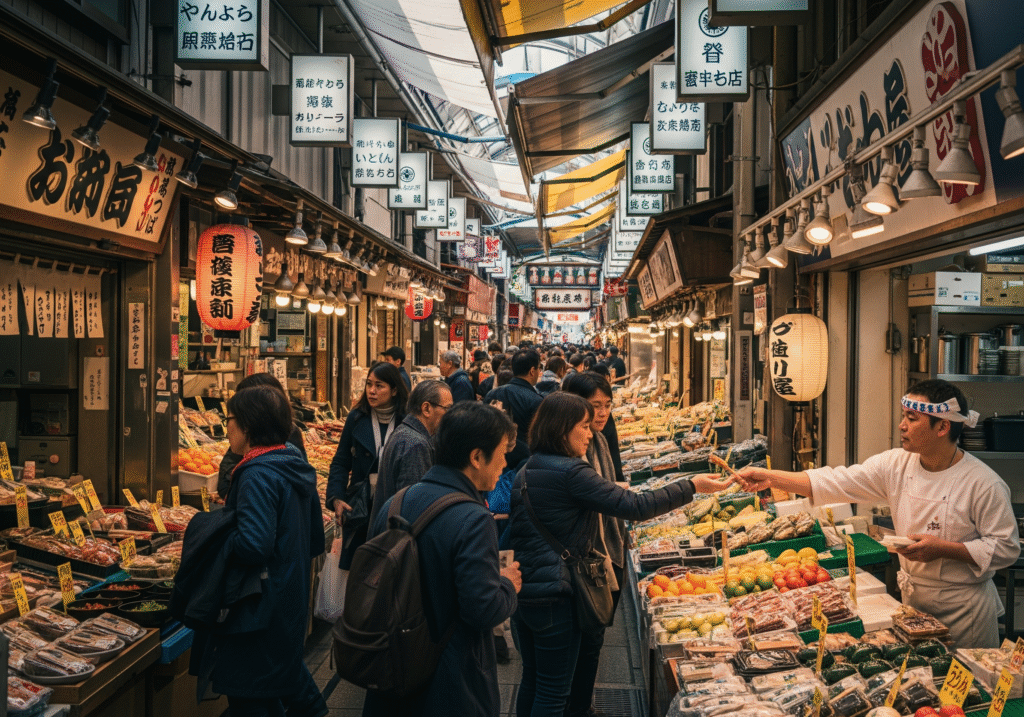
Known as “Kyoto’s Kitchen,” Nishiki Market is a narrow, covered street stretching five blocks through the heart of downtown. Packed with over 100 stalls, it offers a delicious, authentic, and endlessly fascinating taste of Kyoto’s food culture. From fresh yuba (tofu skin) to skewered eel, matcha donuts to Kyoto pickles (tsukemono), this is where your appetite will thank you.
I wandered through mid-morning, letting my nose guide me. I tried crispy soy-flavored senbei, sampled sweet tamagoyaki hot off the grill, and watched a vendor grill baby octopus stuffed with quail eggs, yes. The market isn’t just about eating; it’s about engaging. Vendors greet you with warmth, explain the origins of their offerings, and often let you try a bite before buying.
What I love most about Nishiki is the way it blends tradition with trend. Alongside 400-year-old family businesses, you’ll find modern fusion snacks and locally-made craft beer. It’s the pulse of the city noisy, fragrant, joyful, and even if you don’t buy a thing, just walking through is an experience worth savoring.
8. Stay in a Traditional Ryokan
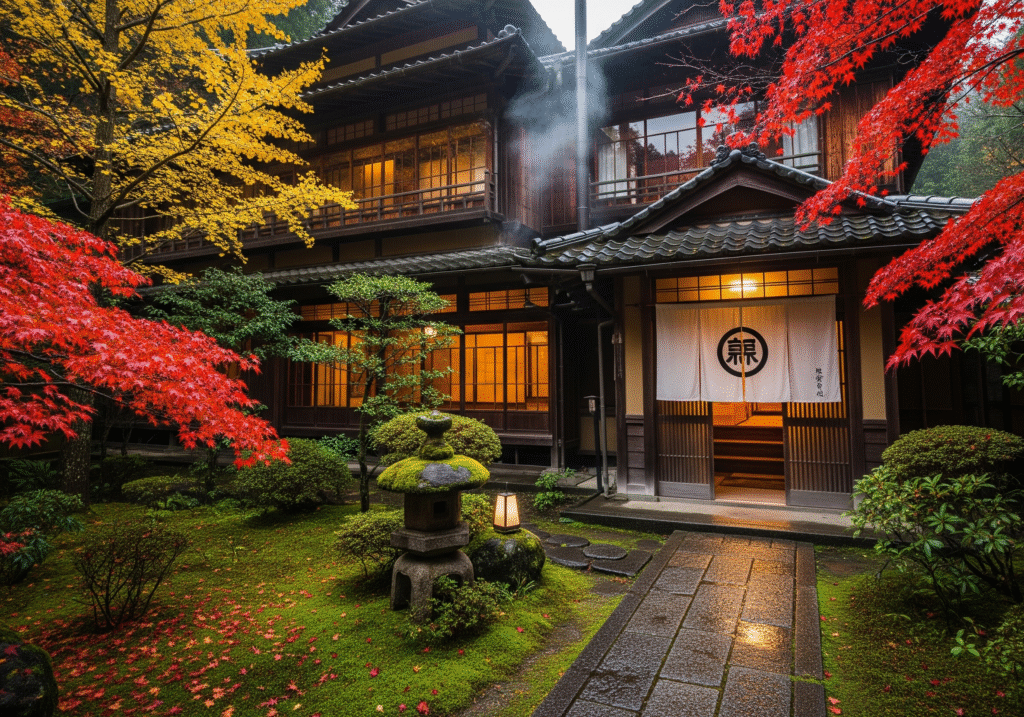
To truly feel Kyoto, you must sleep in it, and there’s no better way than staying in a traditional ryokan. These Japanese inns offer more than a bed for the night. They offer hospitality as an art form. Tatami floors, sliding shoji screens, yukata robes, seasonal kaiseki meals, and the ritual of soaking in a wooden bath all come together in a stay that feels like stepping into another century.
My favorite ryokan experience was at a family-run inn tucked into the hills near Higashiyama. The owner welcomed me at the gate and immediately served hot tea. Dinner that night was a multi-course masterpiece served in my room: simmered vegetables, grilled fish, miso soup, and the fluffiest rice I’ve ever had. The silence of the room, broken only by the sound of bamboo outside, was its own kind of luxury.
While ryokans range from luxurious to modest, even a simple one will leave you with a deeper connection to Japanese culture. If you’re used to hotel chains and digital check-ins, a ryokan stay slows you down and reconnects you to the essence of travel: hospitality, presence, and meaningful pause.
9. Discover Hidden Temples Like Honen-in
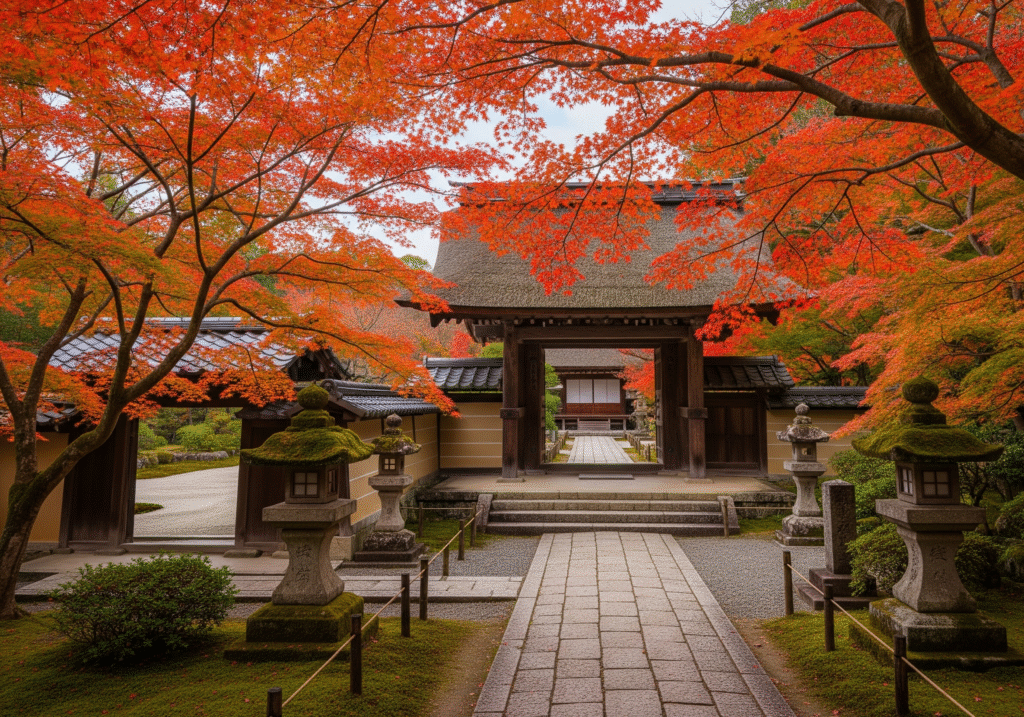
While Kyoto boasts headline temples like Kiyomizu-dera and Kinkaku-ji, its quieter sanctuaries hold a special kind of magic. Honen-in is one such place, an understated, moss-draped temple along the Philosopher’s Path that feels like it belongs in a Studio Ghibli film. Most tourists walk right past it, and that’s what makes it perfect.
When I first visited, the main gate stood slightly ajar, inviting curiosity. Stepping through, I was greeted by two sculpted white sand mounds meant to purify those who enter. Beyond that lay a mossy courtyard, a trickling stream, and a thatched-roof hall so quiet I could hear the wind moving through the trees. I sat alone for 30 minutes, not a soul around, soaking in the sacred stillness.
Honen-in isn’t grand, but it’s profound. There’s no entry fee, no crowds, no spectacle. Just you, nature, and the kind of silence that makes you listen a little harder to your own thoughts. In a city full of treasures, this hidden gem remains one of my most cherished.
10. Watch the Sunset from Kiyomizu-dera
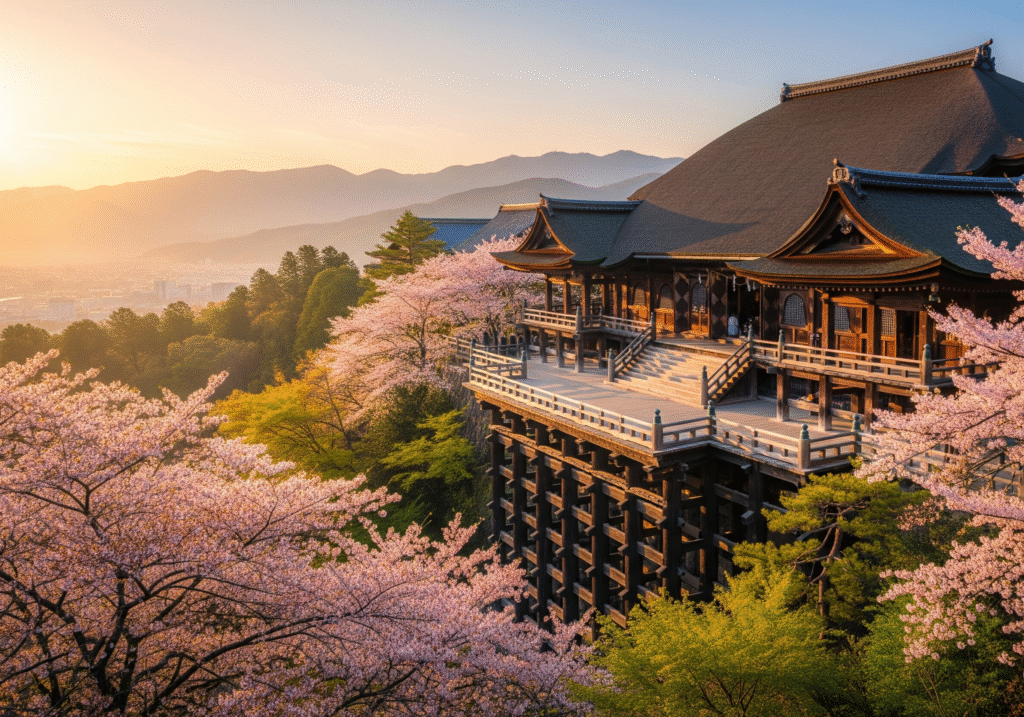
Few experiences in Kyoto rival watching the sun set from the stage at Kiyomizu-dera. Perched on a hillside with sweeping views of the city, this UNESCO-listed temple isn’t just a marvel of architecture, it’s a stage for one of Japan’s most breathtaking natural performances. The view at golden hour is pure magic.
I timed my visit so I’d arrive an hour before sunset. As I stood on the massive wooden terrace, built without nails and suspended above a forest, I watched Kyoto slowly shift into golden hues. Temple bells echoed faintly in the distance, crows cawed overhead, and the city’s rooftops began to sparkle. Everyone around me stood quietly, as if not to disturb the sacredness of the moment.
After sunset, I wandered through the lantern-lit streets of Higashiyama, where souvenir shops and snack stalls gave way to quiet alleys. The energy had changed. It felt softer. More reflective. If there’s a right way to end a day in Kyoto, it’s standing at Kiyomizu-dera, watching the sun disappear behind a city that never forgets how to be still.
🧘 Final Thoughts: Kyoto Is a Living Poem
Kyoto doesn’t demand your attention, it gently invites it. Every step is a lesson in slowing down. Every garden, every bowl of tea, every temple gate reminds you that beauty is best absorbed in quiet, thoughtful sips. For me, Kyoto wasn’t a checklist. It was a rhythm. A series of moments that shifted something inside me.
If you’re lucky enough to visit, don’t just do what’s expected. Get lost. Take detours. Sit longer. Walk slower. That’s where Kyoto reveals itself between the bells, beneath the blossoms, and inside the silences you never knew you needed.
✨ “In Kyoto, I stopped traveling through places and started traveling through myself.” – Malik Thompson

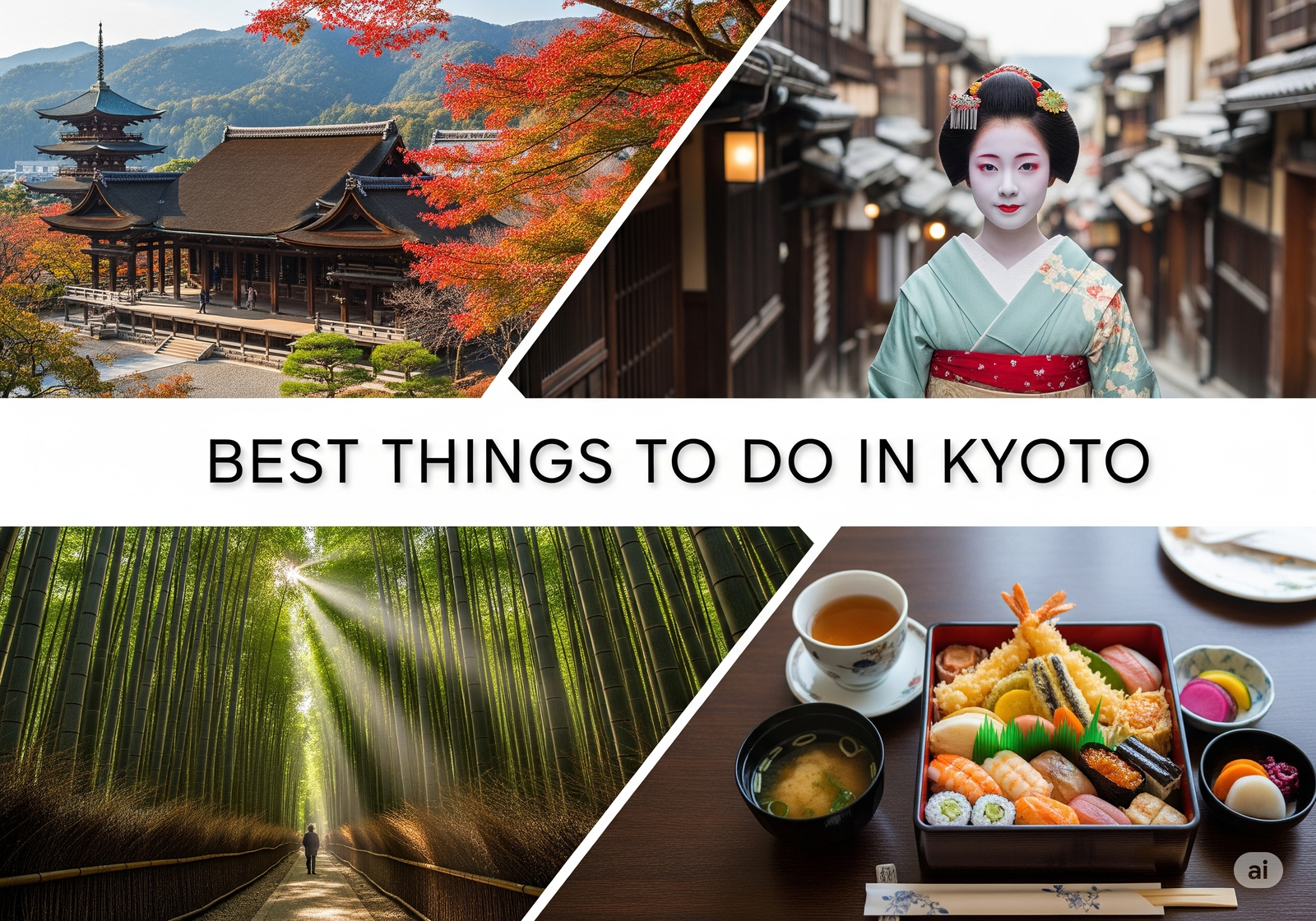






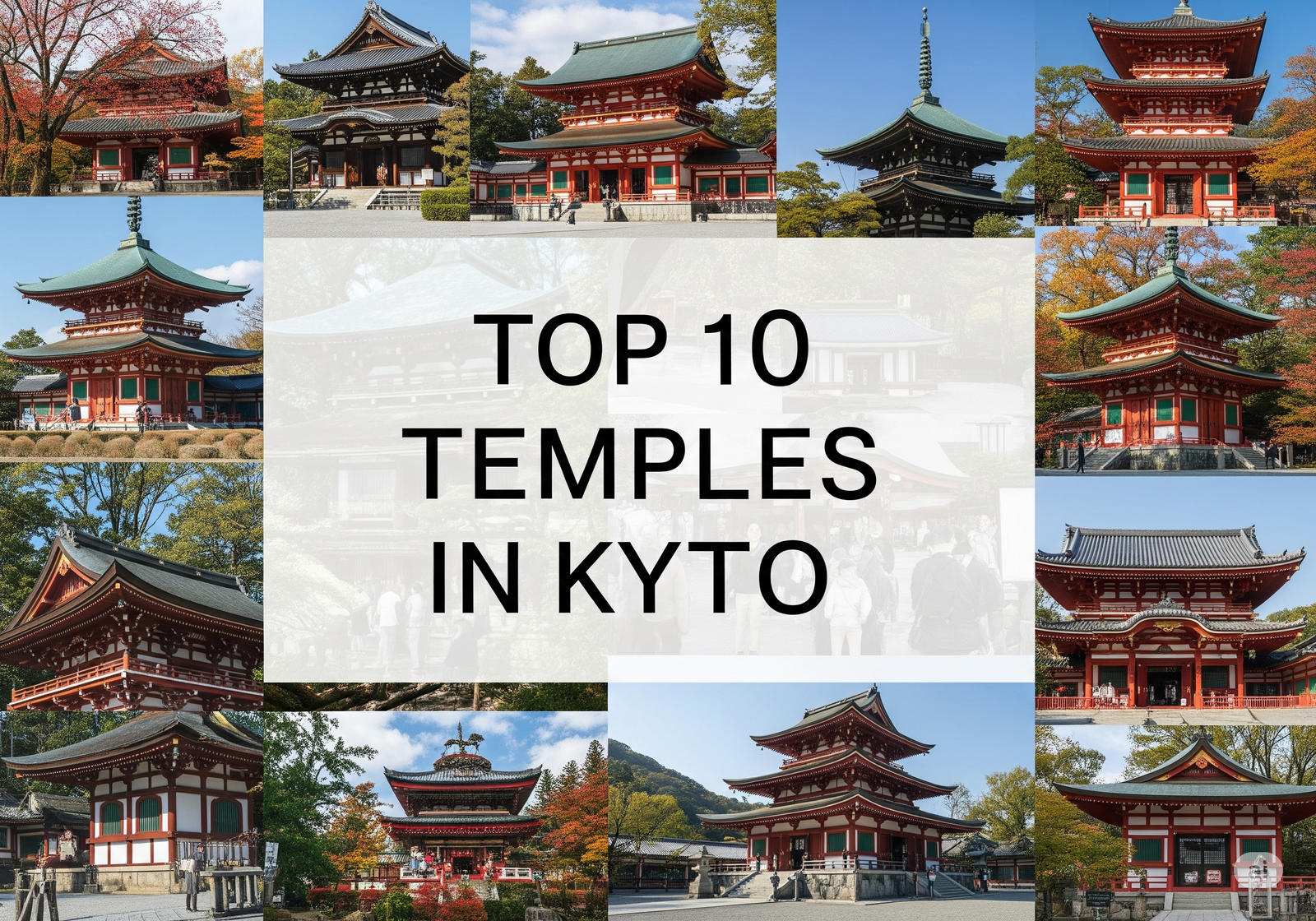



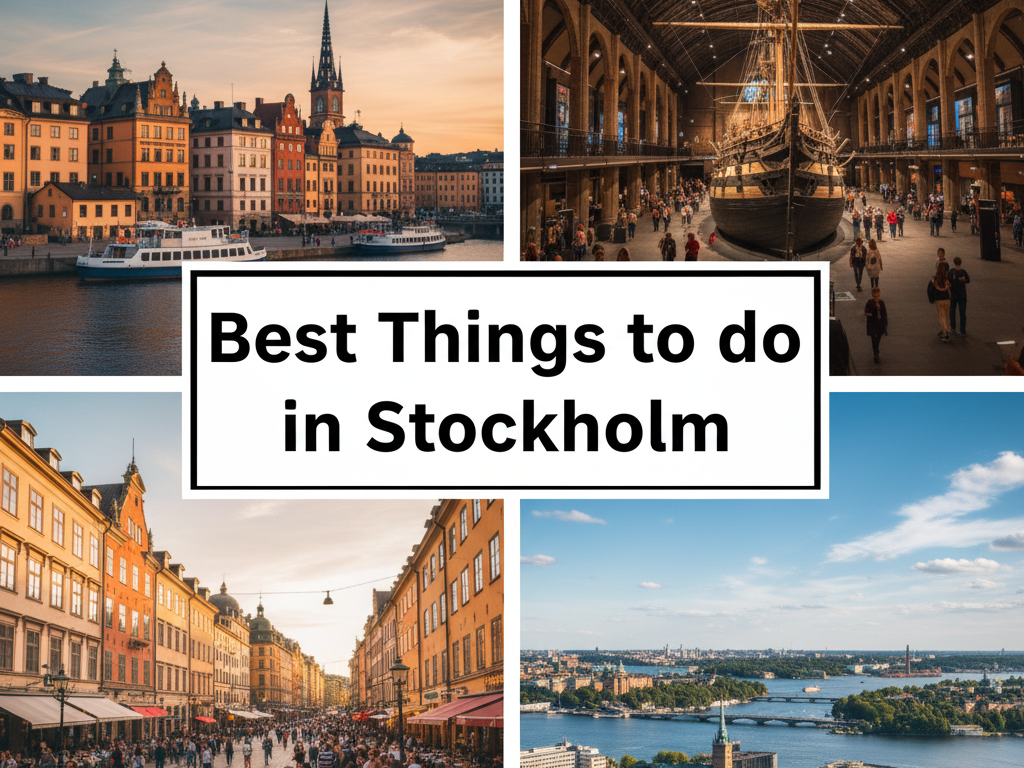

Leave a Reply